Making homemade pizza is not just about the delicious end result—it’s a fun and educational experience, especially when involving children! Crafting the perfect pizza crust from scratch allows kids to explore the joy of cooking while learning basic kitchen skills. Whether it’s kneading the dough, shaping it into creative designs, or picking their favorite toppings, this hands-on activity fosters creativity and family bonding.
Table of Contents
Table of Contents
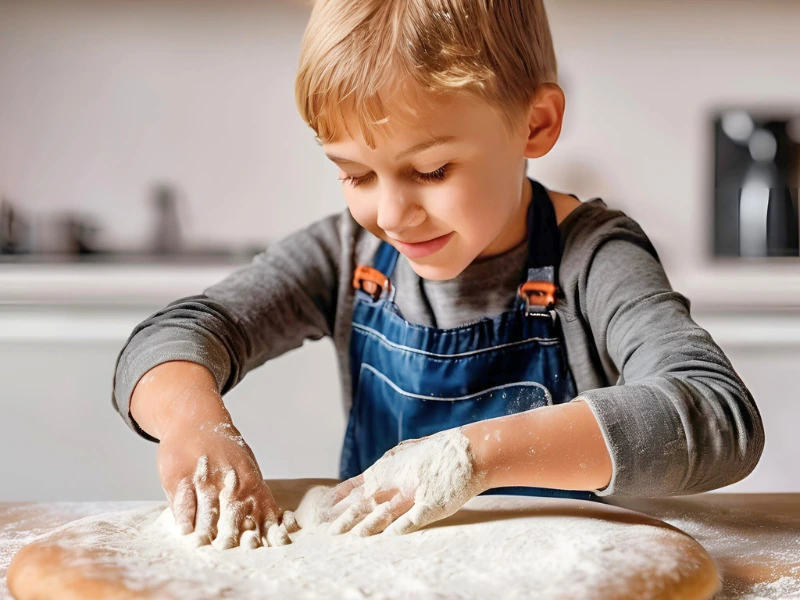
What Makes a Kid-Friendly Pizza Crust?
Creating a pizza crust that kids will love involves more than just mixing flour and water. A perfect kid-friendly pizza crust should be soft, easy to chew, and fun to make. Here are the key elements that make a great pizza dough for children:
Soft and Chewy Texture – Kids typically prefer a softer crust over an extra-crispy one. Using the right balance of flour, yeast, and water ensures a dough that stays light and soft after baking. Adding a little olive oil can also help achieve a tender bite.
Mild Flavor – Some pizza dough recipes include strong flavors like garlic or herbs, but when making a crust for children, keeping it simple is best. A mild, slightly pleasant dough will appeal more to younger taste buds.
Easy to Handle Dough – Since kids love to help in the kitchen, a pizza dough that is soft yet not too sticky makes it easier for them to roll, stretch, and shape into fun designs like hearts or stars. Letting them take part in the process makes the experience more enjoyable!
Quick and Simple Recipe – Children have short attention spans, so a fast-rising dough that doesn’t require hours of waiting is ideal. Using instant yeast can speed up the process, allowing kids to enjoy their homemade pizza sooner.
Healthier Ingredients – Parents often look for ways to make homemade meals more nutritious. Using whole wheat flour, reducing salt, or opting for gluten-free alternatives can make the crust a healthier option while still being delicious.
Essential Ingredients & Tools for Pizza Dough
Making the perfect pizza crust starts with gathering the right ingredients and tools. Here’s everything you need to create a soft, chewy, and flavorful dough from scratch.
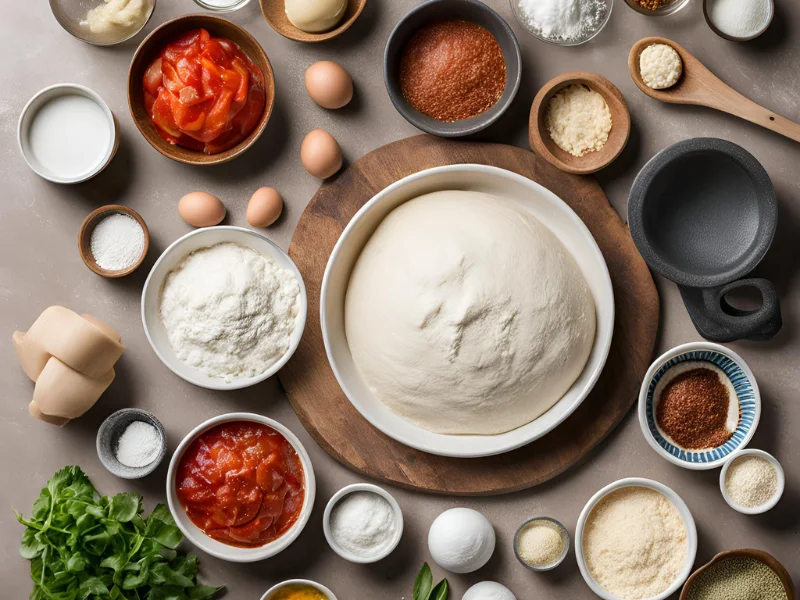
| Ingredient | Quantity | Weight |
| Flour | 3 cups | 360g |
| Yeast | 1 packet (instant) | 7g |
| Warm Water | 1 1/4 cups | 300ml |
| Olive Oil | 2 tablespoons | 30ml |
| Salt | 1 teaspoon | 5g |
| Sugar | 1 teaspoon | 5g |
| Cornmeal (Optional) 1 ) | 1 tablespoon(for dusting) | 5g |
Essential Ingredients for the Dough
- Flour – The foundation of pizza crust. All-purpose flour creates a balanced texture, while bread flour results in a chewier crust. For a healthier option, whole wheat flour can be used.
- Yeast – Instant yeast or active dry yeast helps the dough rise, making it airy and soft. Instant yeast is the best choice for quicker preparation.
- Warm Water – Activates the yeast and brings the dough together. It should be between 100°F and 110°F for the best results.
- Olive Oil – Adds flavor and keeps the dough soft while also helping to create a crispy crust when baked.
- Salt – Enhances the overall flavor and strengthens the dough’s structure.
- Sugar – Feeds the yeast and gives a hint of sweetness to balance the flavors.
- Cornmeal (Optional) – Sprinkling cornmeal on the baking surface helps prevent sticking and adds a subtle crunch to the crust.
Must-Have Tools for Pizza Dough Preparation
- Mixing Bowl – A large bowl is needed to combine the ingredients and let the dough rise properly.
- Measuring Cups & Spoons – Ensures accurate ingredient portions for a consistent texture.
- Wooden Spoon or Dough Hook – Helps mix and knead the dough without too much effort.
- Rolling Pin – Makes it easier to shape the dough into a uniform thickness.
- Baking Sheet or Pizza Stone – A pizza stone helps create a crispier crust by distributing heat evenly, while a baking sheet is great for easy handling.
- Damp Kitchen Towel or Plastic Wrap – Covers the dough while it rises to prevent it from drying out.
- Oven Thermometer (Optional) – Ensures the oven reaches the right temperature for perfectly baked pizza.
Step-by-Step Guide: Making Pizza Crust from Scratch
Making the perfect pizza crust from scratch is easier than you might think, and kids will love being part of the process! Here’s a simple, step-by-step guide to help you create a delicious, soft pizza dough that’s perfect for little hands.
1-Prepare the Dough
Start by combining your dry ingredients: flour, yeast, sugar, and salt. In a large bowl, add warm water and stir to activate the yeast. Gradually add the dry ingredients to the water, mixing until the dough starts to come together. The dough should be slightly sticky but manageable.
2-Knead & Let
It Rise Next, dust a clean surface with a bit of flour, then turn the dough out onto it. Knead the dough for 5-7 minutes, pressing it down and folding it over onto itself repeatedly until it’s smooth and elastic. Once kneaded, place the dough in a greased bowl and cover it with a clean towel. Let it rise in a warm area for 30–60 minutes, or until it has doubled in size. This is when the magic happens—watch it grows!
3-Roll & Shape
the Dough After your dough has risen, punch it down gently to release any air bubbles. Transfer it to a floured surface and begin rolling it out using a rolling pin. For a fun twist, let the kids shape the dough into heart shapes, circles, or even animals! If you’re making mini pizzas, divide the dough into smaller portions. Roll each piece out to your desired thickness.
4-Bake & Enjoy
Preheat your oven to 475°F (245°C), which is the sweet spot for achieving a crispy crust while keeping the inside soft. Place your shaped dough onto a pizza stone or a baking sheet. Bake the pizza crust for 8–10 minutes until it starts to lightly brown. Once it’s out of the oven, top it with your favorite pizza sauce, cheese, and toppings. Return it to the oven for another 5 minutes to melt the cheese and warm everything through.
Fun Ways to Customize Pizza for Children
Making pizza at home is a great way to encourage kids to get creative in the kitchen. From shaping the dough to choosing toppings, every step can be a fun experience. Here are some exciting ways to make pizza time extra special for children:
1. Shape the Dough into Fun Designs
Instead of a traditional round pizza, try making different shapes! Kids will love rolling and cutting the dough into hearts, stars, animals, or even their initials. Using cookie cutters can help create mini pizzas with unique designs.
2. Let Kids Pick Their Own Toppings
Set up a pizza topping station with a variety of ingredients and let kids build their own creations. Offer options like cheese, pepperoni, colorful bell peppers, sweet pineapple, or even fun toppings like mini meatballs or shredded chicken. Giving them control over their toppings makes the experience more enjoyable.
3. Make Mini Personal Pizzas
Instead of one large pizza, divide the dough into smaller portions so each child can have their own personal pizza. This way, everyone gets to make a pizza exactly how they like it. It also helps avoid topping disagreements among siblings!
4. Try a Healthy Twist
For a nutritious alternative, swap traditional dough for a whole wheat crust or add vegetable purées (like spinach or carrots) into the dough. You can also introduce healthier toppings like grilled chicken, fresh tomatoes, or avocado. This makes pizza both tasty and balanced for kids.
5. Experiment with Different Sauces
While classic tomato sauce is always a hit, kids might enjoy trying different flavors! Offer pesto, Alfredo sauce, BBQ sauce, or even a garlic butter base as a fun alternative. Let them mix and match to discover new favorite combinations.
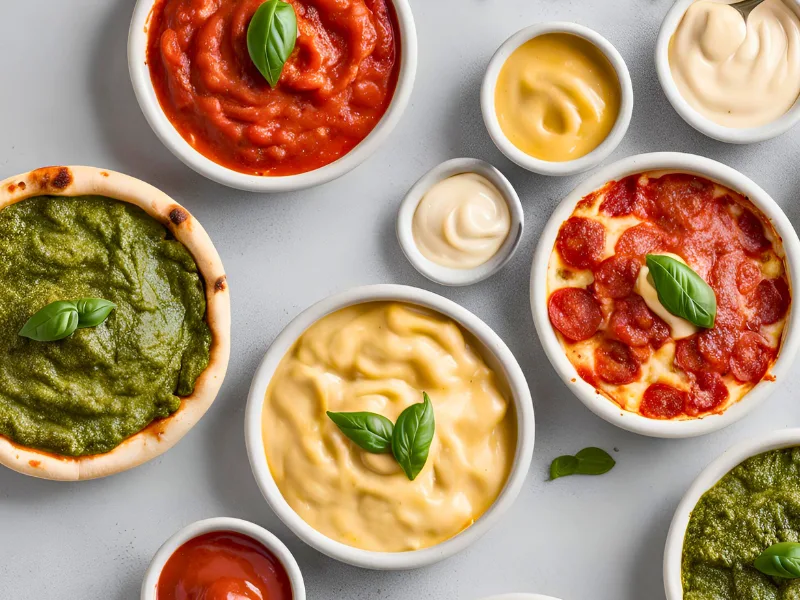
Expert Tips for the Best Homemade Pizza Dough
Achieving the perfect homemade pizza crust requires more than just mixing ingredients. By following these expert tips, you can create a soft, chewy, and flavorful dough that kids and adults will love.
1. Use Warm Water to Activate the Yeast Properly
The temperature of the water plays a crucial role in yeast activation. It should be between 100°F and 110°F (37°C – 43°C)—warm enough to activate the yeast but not too hot, as excessive heat can kill it. Properly activated yeast ensures the dough rises well and creates a light, airy texture.
2. Allow the Dough to Rest and Rise
After kneading, the dough needs time to rise and develop gluten. Let it rest in a warm, draft-free place for at least 30 to 60 minutes. Covering it with a damp towel or plastic wrap prevents it from drying out. This resting period improves the texture, making the crust softer and easier to stretch.
3. Don’t Over-Knead the Dough
Kneading helps develop gluten, which gives the dough its pliantness. still,over-kneading can make the crust too tough and leathery. Knead the dough for 5 to 7 twinkles — just enough for it to come smooth and slightly springy to the touch.
4. Preheat the Oven for a Crispy Crust
Baking pizza at a high temperature (475°F – 500°F or 245°C – 260°C) ensures a crispy yet tender crust. If possible, preheat a pizza stone or baking sheet in the oven before placing the dough on it. The immediate heat contact helps create a golden, crisp bottom.
5. Avoid Overloading the Dough with Toppings
While kids love piling on toppings, adding too many ingredients can make the crust soggy. A light layer of sauce, a moderate amount of cheese, and evenly distributed toppings will keep the pizza balanced and allow the dough to cook properly.
6. Experiment with Different Flours for Better Texture
All-purpose flour works well for a soft and chewy crust, but you can experiment with bread flour for a slightly crispier texture or whole wheat flour for a heartier, healthier option. Mixing different flours can enhance flavor and create a more complex dough structure.
7. Brush the Crust with Olive Oil for Extra Flavor
Brushing the edges of the dough with olive oil or garlic butter before baking gives the crust a golden-brown color and a rich flavor. For extra taste, sprinkle a bit of sea salt, garlic powder, or Italian seasoning before placing it in the oven.
8. Store Dough Properly for Later Use
If you want to make pizza dough ahead of time, store it in the refrigerator for up to 48 hours or freeze it for up to three months. When ready to use, let it come to room temperature before rolling it out to prevent cracking.
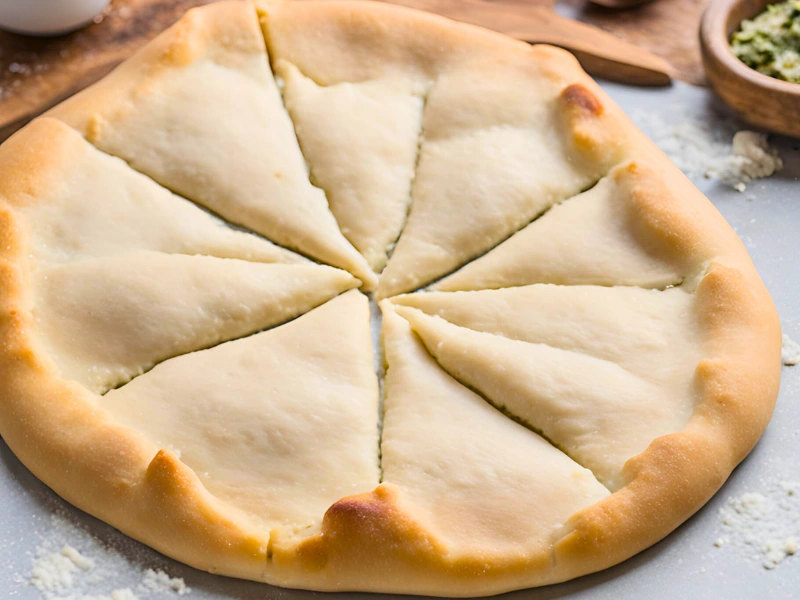
FAQs About Homemade Pizza Crust
1-Can I make pizza dough ahead of time?
Yes! You can prepare the dough in advance and store it in the refrigerator for over to 48 hours. However, freezing is a great option, If you need to keep it longer. Just wrap the dough tightly in plastic serape and store it in an watertight vessel. When ready to use, let it thaw at room temperature before rolling it out.
2-What type of flour works best for pizza crust?
All-purpose flour is the most common choice for a soft and chewy crust, but for a more authentic pizzeria-style pizza, try using bread flour—it has a higher protein content that gives the crust more elasticity and chew. If you’re looking for a healthier option, whole wheat flour adds fiber and a nutty flavor to the dough.
3-How do I get a crispy yet soft pizza crust?
Baking at a high temperature (475°F – 500°F) ensures a crispy exterior while keeping the inside tender. Using a pizza stone or preheated baking sheet helps distribute heat evenly, creating a perfectly crisp base. Also, avoid overloading the pizza with toppings, as excess moisture can make the crust soggy.
4-Why isn’t my pizza dough rising properly?
This issue is often caused by inactive yeast or incorrect water temperature. Make sure your yeast is fresh and that the water is warm (not hot!)—between 100°F and 110°F. Cold or overly hot water can prevent proper activation. Also, letting the dough rise in a warm, draft-free area helps it expand properly.
5-Can I make pizza dough without yeast?
Absolutely! A no-yeast pizza crust can be made using baking powder or Greek yogurt as a leavening agent. While the texture may not be as chewy as traditional yeast-based dough, it’s a quick and easy alternative when you’re short on time.
6-What’s the best way to roll out pizza dough?
For best results, let the dough rest at room temperature for 15-20 minutes before rolling—it makes stretching much easier. Lightly flour your surface and rolling pin to prevent sticking, and avoid overworking the dough, as this can make it tough. If the dough keeps shrinking back, let it rest a little longer before shaping it again.
Conclusion
Making pizza crust from scratch is easier than you think! By following this simple recipe, you can create a soft, delicious crust that kids will love. Plus, it’s a great way to introduce them to the joys of home cooking.
Involving children in the process makes mealtime more exciting. From mixing the dough to shaping mini pizzas, every step can be a fun learning experience. This hands-on activity encourages creativity and builds confidence in the kitchen.
Customizing the pizza adds a personal touch. Whether it’s making heart-shaped dough, adding favorite toppings, or experimenting with healthier ingredients, kids can enjoy a meal tailored to their tastes.
Remember the key tips for success. Use warm water to activate the yeast, let the dough rise properly, and bake at high heat for the best texture. These small details make a big difference in achieving a perfect pizza crust.
Now it’s time to get creative in the kitchen! Try this recipe with your little chefs, and don’t forget to capture the fun moments. Share your homemade pizzas on social media using #PizzaForKids #HomemadePizza #EasyPizzaCrust to inspire others! 🍕✨

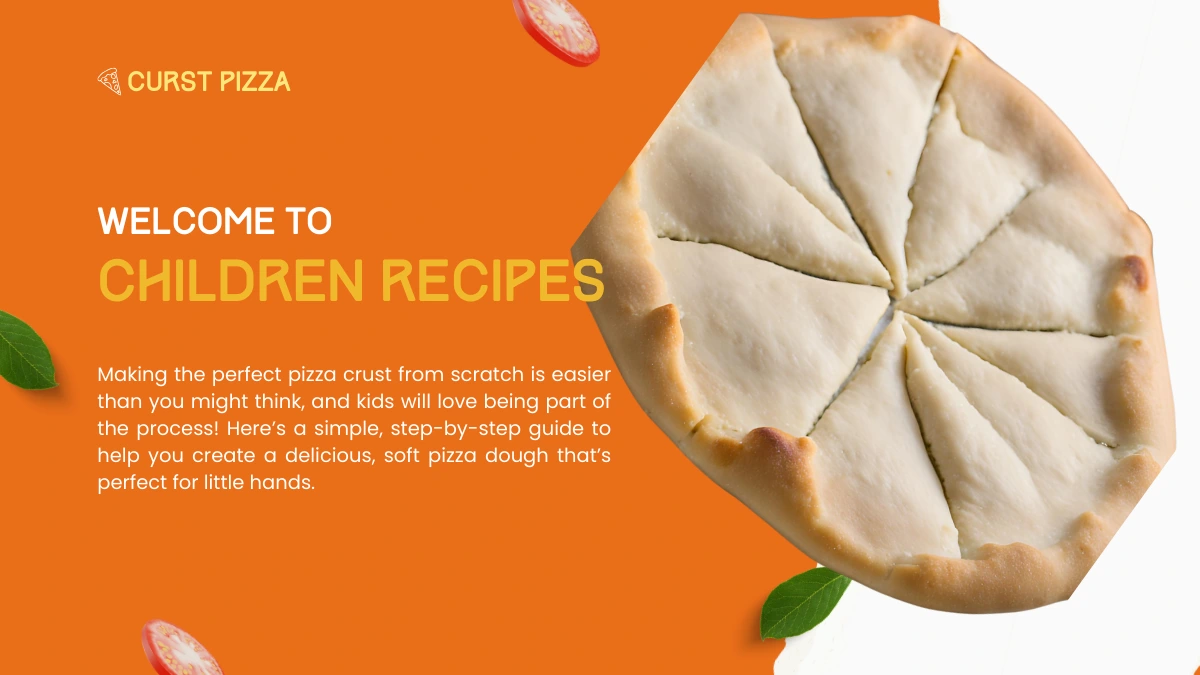
3 thoughts on “How to Make the Perfect Pizza Crust Recipe from Scratch for children”